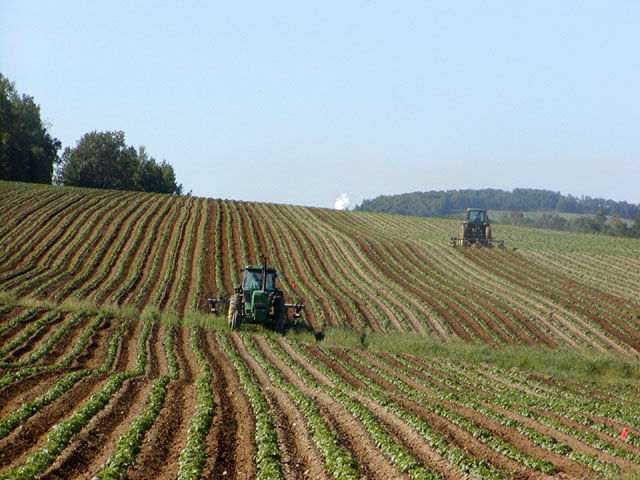Soil depletion is a loss of materials and nutrients from the soil, which decreases soil fertility.
Three main factors of soil depletion can cause loss of soil fertility: erosion (water and wind), physical degradation processes, and chemical degradation processes.
-
The absence of vegetation makes soil vulnerable to environmental factors. The soil is further exposed to rainwater runoff and wind action. These water and wind factors accentuate soil erosion. As a result, a loss of materials and nutrient-rich humus occurs. In fact, the upper horizons of the soil (O and A) are likely to be destroyed. These soils can then deteriorate rapidly and become infertile. The presence of dense vegetation on a soil helps protect it against water and wind erosion.


-
Soil can compact under the weight of a large mass, which greatly reduces its porosity and ventilation. When this happens, the soil absorbs less water from rainfall or runoff, which reduces its fertility. In the presence of such phenomena, we refer to physical degradation of the soil.

-
Chemical degradation of soils, on the other hand, occurs when the pH of the soil becomes acidic, or when the soil accumulates salts. Both of these phenomena slow down the formation of humus from living organisms in the soil. As a result, the soil becomes poorer in nutrients, which reduces its fertility. Chemical degradation is often caused by soil contamination from various toxic substances of anthropogenic sources.

Several human activities promote soil depletion:
-
intensive agriculture;
-
use of heavy machinery;
-
chemical contamination;
-
urbanization;
-
massive deforestation (clearcutting).
Through intensive agriculture, human activity prevents the soil from regenerating as the same minerals have to be used continuously. This creates a scarcity of these minerals and makes it more difficult to cultivate the soil. Thus, fertilizers are used on a massive scale, which can lead to soil contamination. The use of heavy machinery in agriculture also brings some consequences, as the soil compacts under the weight of vehicles and water absorption by the soil is reduced.
Urbanization is also a factor leading to soil depletion. In addition to eliminating some agricultural land through urban sprawl, removal of trees on these lands takes away the roots that support the soil and protect it from erosion.
Deforestation (clearcutting) is also an activity that has impacts on the soil as it deprives it of plants, which limit runoff and promote its porosity. This leads to increased erosion, which, in turn, reduces the amount of minerals and organic matter present in the soil.
Depending on the geographic region, the chemical composition of soils varies greatly. In fact, the composition of soils is closely related to climate (amount and types of precipitation, temperature, etc.). The more precipitation an area receives, the more the soil constituents will change. Certain chemical elements are more resistant to the effects of climate than others.
Rocks in desert or cold climates are more mechanically transformed, while rocks in temperate or warm climates are more exposed to the chemical action of the environment. The chemical weathering of rocks requires water and a given temperature.
-
The following elements are more rapidly altered by chemical actions: potassium (K), sodium (Na), magnesium (Mg), and calcium (Ca).
-
The following elements are more resistant to environmental actions: aluminum (Al), iron (Fe), and silicon (Si).




